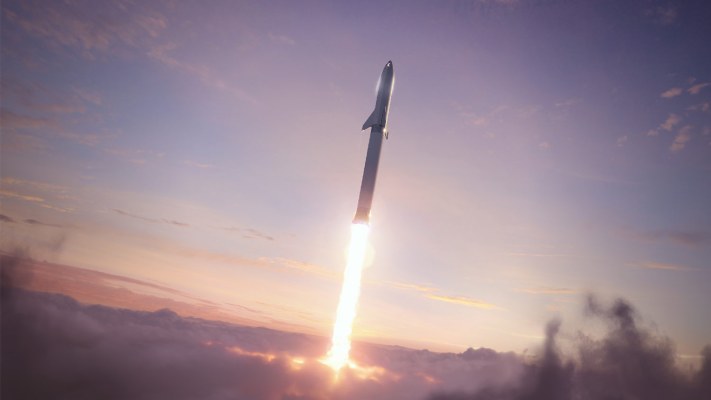SpaceX has prepared a draft environmental assessment around its plans for the new Starship and Super Heavy spacecraft launches it intends to begin, in a test capacity, very soon. Preparing and finalizing this environmental assessment is a key ingredient in actually launching both Super Heavy, the first stage for SpaceX’s forthcoming fully reusable, high-capacity launch system, and Starship, the second-stage spacecraft component of said system.
Already, SpaceX is working toward getting a prototype of Starship in the air, with planned launches coming in just “2 to 3 months,” if SpaceX CEO Elon Musk manages to meet his optimistic timeline. It recently completed an untethered “hop” low-altitude test flight of StarHopper, a sub-scale demonstration version of the Starship design meant to help it test that craft’s Raptor engine. But SpaceX must also show that it has fully considered the potential consequences that its planned launch operations will have on the surrounding environment.
Starship and Super Heavy will launch from Florida, with the current plan to build a second launch mount at its current LC-39A launch pad at Kennedy Space Center, which it leases from NASA and currently uses for Falcon 9 and Falcon Heavy launches. After launching from LC-39A, the current plan is to have Starship return to Landing Zone 1 (LZ-1), which is SpaceX’s current landing area for Falcon first-stage boosters at nearby Cape Canaveral Air Force Station. Super Heavy would land downrange, aboard a drone barge ship, like the twin “Of Course I Still Love You” and “Just Read The Instructions” ships that SpaceX uses now, depending on mission conditions on both its East and West coast launches.
Eventually, SpaceX hopes to also be able to build a landing zone within the existing confines of its LC-39A launch pad area, with the intent of landing Starship back much closer to where it launches — this will require more study to determine its viability and impact, however, so SpaceX has left that consideration for future investigation for now.
“Designed by NASA to support the first human missions to the Moon, Launch Complex 39A is one of the world’s most capable launch sites with the infrastructure to support a wide variety of mission profiles,” a SpaceX spokesperson said in a statement provided to TechCrunch. “As Starship development accelerates, SpaceX is working with our partners to continue upgrading LC-39A’s infrastructure to build upon past achievements and advance new capabilities in space.”
SpaceX says in the draft assessment that it also considered potentially launching and landing Starship and Super Heavy from its SLC-40 and SLC-4 launch sites, which are at Cape Canaveral Air Force Station and Vandenberg Air Force Base, respectively, but these would not offer enough space in the case of SLC-40, or would require too long a trip back to the launch site in the case of SLC-4 (which would be an overland cross-country U.S. road trip for a huge rocket).
Finally, SpaceX also notes that it may, in the future, “develop and launch the Starship/Super Heavy from its facility in Cameron County, TX.” A Texas-based launch site would have benefits in terms of proximity to one of SpaceX’s key rocket/engine development facilities, and if it’s successful in making its reusable launch and landing system extremely consistent in performance, the downsides of not being near a large body of water could be mitigated. These plans, however, will also merit separate consideration, so don’t expect full-scale launches for Starship from Texas in the near future.
